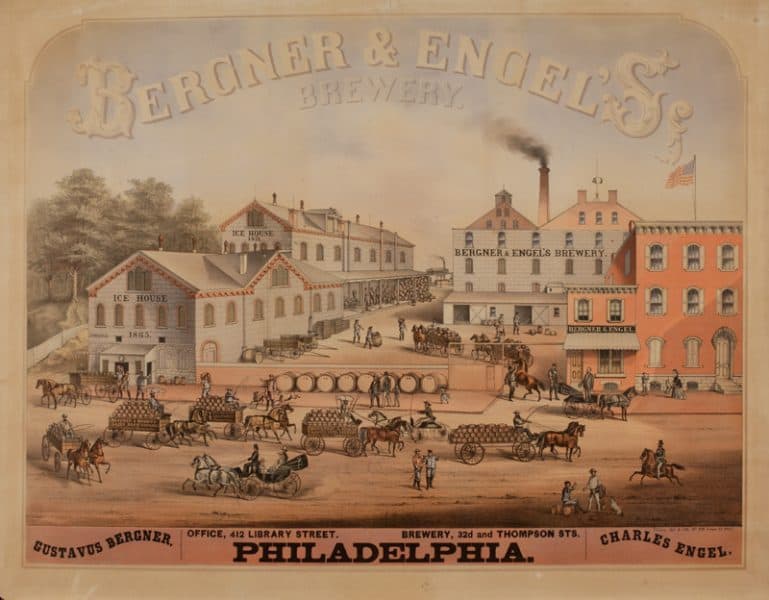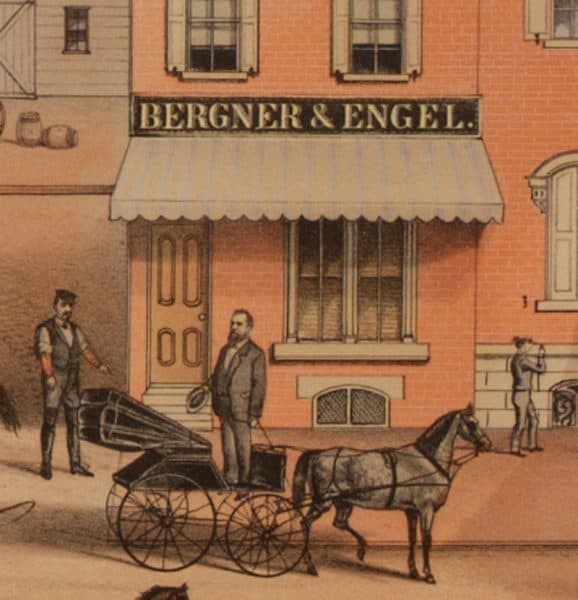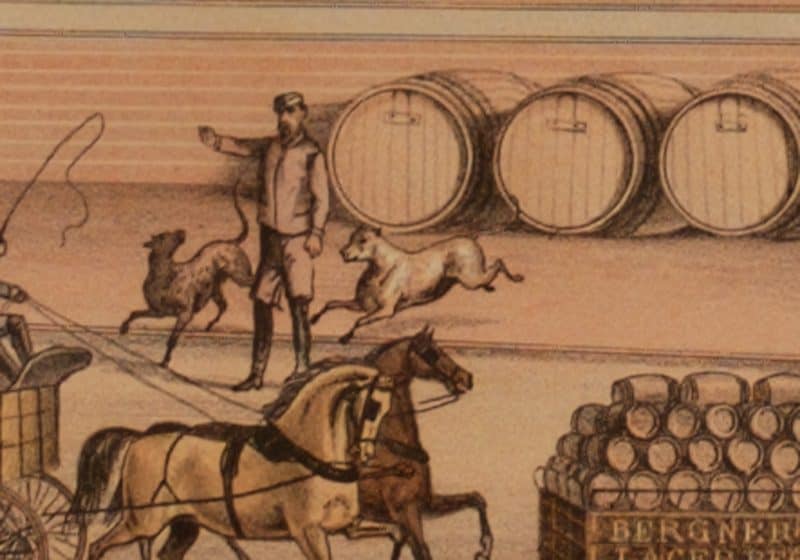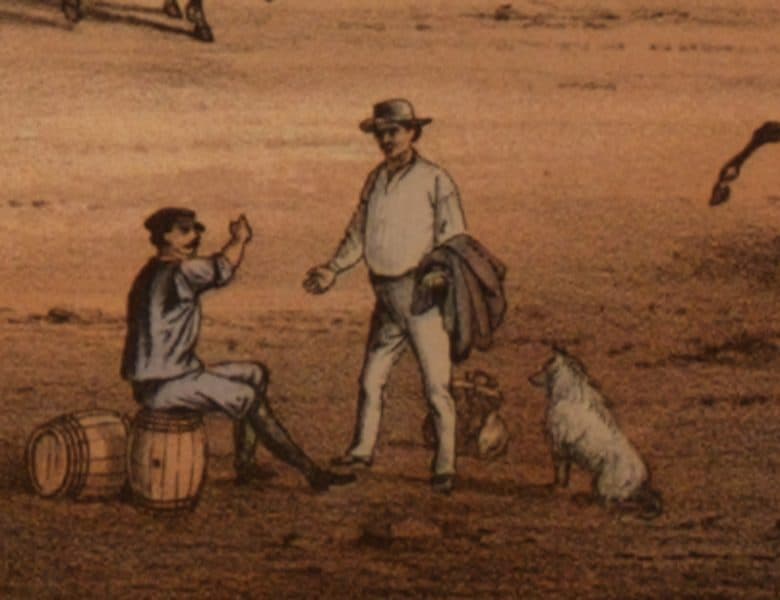Curator‘s Favorite: Bergner & Engel’s Brewery

Bergner & Engel’s Brewery. Office, 412 Library Street. Brewery, 32d and Thompson Sts. Philadelphia. (Philadelphia: Charles P. Tholey, ca. 1873). Chromolithograph.
Since the erection of the first brewery in Philadelphia circa 1683, beer making has been a near steady Philadelphia industry. Following the introduction of lager beer to the Philadelphia market in the mid-19th century, German-American brewers dominated the field. The firm of Bergner & Engel, formed in 1870 between longtime brewers Gustave Bergner and Charles Engel, symbolized the best of the best of that era’s nearly one hundred, mostly German-American run breweries. Operating from a plant built for Bergner in 1858 at 32nd and Thompson streets, the brewery served as the forerunner in the establishment of the industrial neighborhood known as Brewerytown.
This circa 1875 print, a chromolithograph by German-born lithographer Charles P. Tholey, evokes the vitality of the brewing industry and documents the eye-catching imagery of advertising for the city during the 19th century. The advertisement conveys the expanse of the Bergner & Engel plant that included ice houses, a brew room, fermenting and cooling rooms, store rooms, offices, and dwellings. The numerous factory wagons loaded with kegs of beer to be delivered, the visible construction dates of the ice houses, and the several returned and cleaned barrels demonstrate the success of the company. To catch and keep the viewer’s eye, Tholey also employed subtle details such as the excited dogs, the probable job seeker soliciting a worker on break, and one of the proprietors, Bergner, conversing with an employee in front of his office.

Detail depicting one of the proprietors, Bergner, conversing with an employee in front of his office.

Detail depicting excited dogs.

Detail depicting the probable job seeker soliciting a worker on break.
Unlike advertisements of today, the product for sale does not serve as the focus of the print. Rather, the factory comprises the image. Competition for consumers was not based on the quality of the good, but the quality of the establishment in which the product was produced. Regarding the circulation of such prints, rather than posting them publicly in stations, on buildings, or fences, businesses probably enclosed the advertisements with product shipments sent to their distributors throughout the country. Enterprises such as Bergner & Engel anticipated that their retailers would display the prints in the public spaces of their establishments to promote their products to a broader base of consumers.*
Eye catching and beautifully executed, this advertising print is just one of several held within the lithograph collection of the Print and Photograph Department. Associate Curator Jenny Ambrose continues to research this genre of print through Philadelphia on Stone, a project that will culminate with an exhibition, book, and an online biographical dictionary about Philadelphia lithography and lithographers.
Erika Piola
Senior Curatorial Associate
*See Jennifer Ambrose, “Nineteenth Century Advertising Prints,” in The Magazine Antiques(August 2006).
